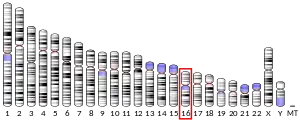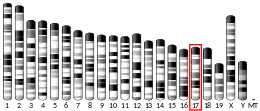| FAM234A | |||||||||||||||||||||||||||||||||||||||||||||||||||
|---|---|---|---|---|---|---|---|---|---|---|---|---|---|---|---|---|---|---|---|---|---|---|---|---|---|---|---|---|---|---|---|---|---|---|---|---|---|---|---|---|---|---|---|---|---|---|---|---|---|---|---|
| Identifiers | |||||||||||||||||||||||||||||||||||||||||||||||||||
| Aliases | FAM234A, C16orf9, gs19, ITFG3, family with sequence similarity 234 member A | ||||||||||||||||||||||||||||||||||||||||||||||||||
| External IDs | MGI: 2146854 HomoloGene: 12932 GeneCards: FAM234A | ||||||||||||||||||||||||||||||||||||||||||||||||||
| |||||||||||||||||||||||||||||||||||||||||||||||||||
| |||||||||||||||||||||||||||||||||||||||||||||||||||
| |||||||||||||||||||||||||||||||||||||||||||||||||||
| |||||||||||||||||||||||||||||||||||||||||||||||||||
| |||||||||||||||||||||||||||||||||||||||||||||||||||
| Wikidata | |||||||||||||||||||||||||||||||||||||||||||||||||||
| |||||||||||||||||||||||||||||||||||||||||||||||||||
Protein ITFG3 also known as family with sequence similarity 234 member A (FAM234A) is a protein that in humans is encoded by the ITFG3 gene.[5][6] Here, the gene is explored as encoded by mRNA found in Homo sapiens. The FAM234A gene is conserved in mice, rats, chickens, zebrafish, dogs, cows, frogs, chimpanzees, and rhesus monkeys.[7] Orthologs of the gene can be found in at least 220 organisms including the tropical clawed frog, pandas, and Chinese hamsters.[8] The gene is located at 16p13.3 and has a total of 19 exons. The mRNA has a total of 3224 bp and the protein has 552 aa.[9][7] The molecular mass of the protein produced by this gene is 59660 Da.[10] It is expressed in at least 27 tissue types in humans, with the greatest presence in the duodenum, fat, small intestine, and heart.[7]
A “Newfoundland deletion” or a0-thalassemia deletion has been found within the second intervening sequence of the FAM234A gene.[11] The gene is associated with multiple red blood cell phenotypes in African Americans – though the exact function or effect of the gene was not entirely clear.[12] Review of GeneCards’ current database on the FAM234A gene provided no additional elucidation on the function of the gene.[10]
Gene
FAM234A is located on Chromosome 16 (234,546 - 269, 943). It is 35,398 bases long, contains 11 exons, and is oriented on the plus strand in the 5' to 3' direction. Other aliases include ITFG3, C16orf9, and gs19.
There are no known paralogs of FAM234A.
The FAM234A gene is conserved in at least 220 organisms, with no evidence for conservation of the gene in single-celled organisms. Listed below is a selection of orthologs with the estimated date of divergence from human lineage in million years ago (MYA), the accession number, and the % identity to human FAM234A. This list does not contain all of the known orthologs.
| Common Name | Divergence from Human Lineage (MYA) | Accession Number | Identity to Human (%) |
|---|---|---|---|
| Rhesus Monkey | 28.1 | NP_001253283.1 | 95 |
| White-tufted-ear marmoset | 42.6 | XP_009007067.1 | 86 |
| House mouse | 88 | NP_001344823.1 | 86 |
| Chinese Hamster | 88 | XP_003501607.1 | 77 |
| Upper Galilee mountains blind mole rat | 88 | XP_008849023.1 | 74 |
| Golden Hamster | 88 | XP_005081607.1 | 76 |
| Giant Panda | 94 | XP_011224429.1 | 73 |
| Horse | 94 | XP_014585783.1 | 74 |
| Beluga Whale | 94 | XP_022450014.1 | 73 |
| Chicken | 320 | XP_414950.2 | 45 |
| Blue Tit | 320 | XP_023792271.1 | 43 |
| Bengalese Finch | 320 | XP_021404267.1 | 44 |
| Central Bearded Dragon | 320 | XP_020667631.1 | 43 |
| Australian saltwater crocodile | 320 | XP_019395600.1 | 47 |
| Tropical Clawed Frog | 353 | NP_001121517.1 | 35 |
| Zebrafish | 432 | XP_001336768.2 | 31 |
| Barramundi Perch | 432 | XP_018520114.1 | 34 |
| Japanese Medaka | 432 | XP_020567870.1 | 33 |
| Elephant Shark | 465 | XP_007906598.1 | 37 |
| Rat | 88 | NP_001009701.1 | 72 |
mRNA
There are at least 11 FAM234A isoforms. Aside from the longest transcript, the other isoforms differ by truncation, primarily at the 3' end. This results in a wide variation in sequence length between isoforms.
Protein

The FAM234A gene encodes a serine and leucine rich protein titled the "FAM234A Protein" or ITFG3. The encoded protein is 552 amino acids in length with a predicted molecular weight of 59,660Da and a basal isoelectric point of 5.84.[13] The FAM234A protein has a notable hydrophobic region from position 49-70 in the amino acid sequence that correlates with one of the two trans-membrane regions found on FAM234A.[14] FAM234A has membrane topology type 3a, indicating multiple trans-membrane regions with its N-terminus facing the cytosol. The protein is predicted to be located in the endoplasmic reticulum, with portions of it found within the endoplasmic reticulum lumen.[14] Within the cell, FAM234A has also been localized to the ribosomes and nucleus.[15]
References
- 1 2 3 GRCh38: Ensembl release 89: ENSG00000167930 - Ensembl, May 2017
- 1 2 3 GRCm38: Ensembl release 89: ENSMUSG00000024187 - Ensembl, May 2017
- ↑ "Human PubMed Reference:". National Center for Biotechnology Information, U.S. National Library of Medicine.
- ↑ "Mouse PubMed Reference:". National Center for Biotechnology Information, U.S. National Library of Medicine.
- ↑ "Entrez Gene: ITFG3 integrin alpha FG-GAP repeat containing 3".
- ↑ "FAM234A Symbol Report | HUGO Gene Nomenclature Committee". www.genenames.org. Retrieved 2018-02-20.
- 1 2 3 "FAM234A family with sequence similarity 234 member A [Homo sapiens (human)] - Gene - NCBI". www.ncbi.nlm.nih.gov. Retrieved 2018-02-20.
- ↑ "NCBI GENE Ortholog Search".
- ↑ "protein FAM234A [Homo sapiens] - Protein - NCBI". www.ncbi.nlm.nih.gov. Retrieved 2018-02-20.
- 1 2 Database, GeneCards Human Gene. "FAM234A Gene - GeneCards | F234A Protein | F234A Antibody". www.genecards.org. Retrieved 2018-02-20.
- ↑ Waye JS, Eng B, Hanna M, Hohenadel BA, Nakamura L, Walker L (May 2017). "α0-Thalassemia Due to a 90.7 kb Deletion (-/-NFLD)". Hemoglobin. 41 (3): 218–219. doi:10.1080/03630269.2017.1369987. PMID 28838269. S2CID 205563358.
- ↑ Chen Z, Tang H, Qayyum R, Schick UM, Nalls MA, Handsaker R, et al. (June 2013). "Genome-wide association analysis of red blood cell traits in African Americans: the COGENT Network". Human Molecular Genetics. 22 (12): 2529–38. doi:10.1093/hmg/ddt087. PMC 3658166. PMID 23446634.
- ↑ "ITFG3 (human)". www.phosphosite.org. Retrieved 2018-05-06.
- 1 2 EMBL-EBI. "SAPS < Sequence Statistics < EMBL-EBI". www.ebi.ac.uk. Retrieved 2018-05-06.
- ↑ "Cell atlas - FAM234A - The Human Protein Atlas". www.proteinatlas.org. Retrieved 2018-05-06.
Further reading
- Flint J, Thomas K, Micklem G, Raynham H, Clark K, Doggett NA, King A, Higgs DR (March 1997). "The relationship between chromosome structure and function at a human telomeric region". Nature Genetics. 15 (3): 252–7. doi:10.1038/ng0397-252. PMID 9054936. S2CID 20630444.
- Hartley JL, Temple GF, Brasch MA (November 2000). "DNA cloning using in vitro site-specific recombination". Genome Research. 10 (11): 1788–95. doi:10.1101/gr.143000. PMC 310948. PMID 11076863.
- Daniels RJ, Peden JF, Lloyd C, Horsley SW, Clark K, Tufarelli C, Kearney L, Buckle VJ, Doggett NA, Flint J, Higgs DR (February 2001). "Sequence, structure and pathology of the fully annotated terminal 2 Mb of the short arm of human chromosome 16". Human Molecular Genetics. 10 (4): 339–52. doi:10.1093/hmg/10.4.339. PMID 11157797.
- Wiemann S, Arlt D, Huber W, Wellenreuther R, Schleeger S, Mehrle A, Bechtel S, Sauermann M, Korf U, Pepperkok R, Sültmann H, Poustka A (October 2004). "From ORFeome to biology: a functional genomics pipeline". Genome Research. 14 (10B): 2136–44. doi:10.1101/gr.2576704. PMC 528930. PMID 15489336.
- Mehrle A, Rosenfelder H, Schupp I, del Val C, Arlt D, Hahne F, Bechtel S, Simpson J, Hofmann O, Hide W, Glatting KH, Huber W, Pepperkok R, Poustka A, Wiemann S (January 2006). "The LIFEdb database in 2006". Nucleic Acids Research. 34 (Database issue): D415-8. doi:10.1093/nar/gkj139. PMC 1347501. PMID 16381901.



